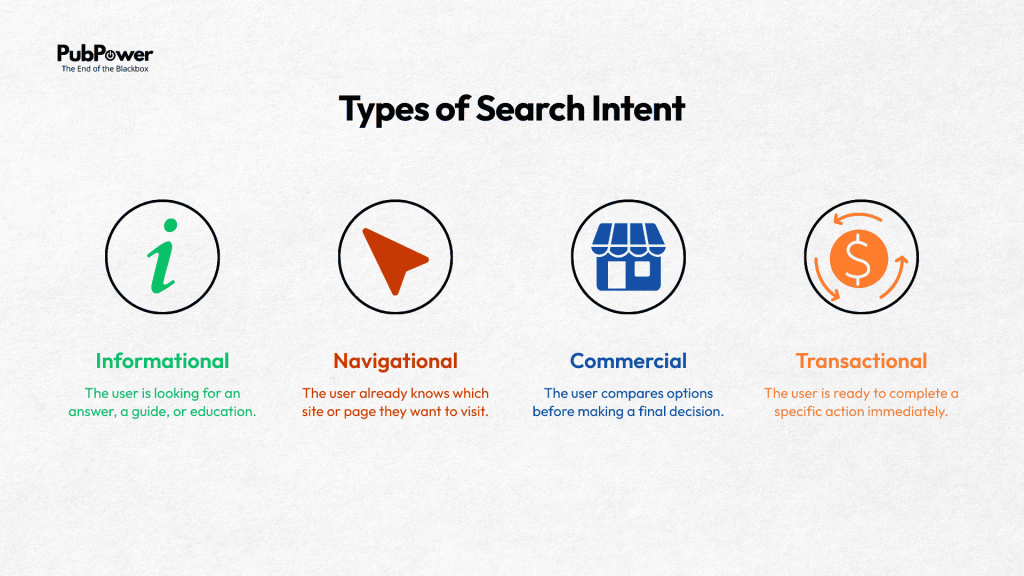For digital publishers and webmasters, content is more than just words on a page—it is a business asset. However, even the most insightful articles will fail to generate ad revenue or engagement if they remain invisible to search engines. This is where keyword research becomes your most valuable tool. By identifying exactly what your audience is searching for, you can bridge the gap between user curiosity and your content, driving the high-quality organic traffic that fuels sustainable growth in the competitive world of programmatic advertising.
In this guide, we will move beyond the basics and explore how to conduct effective keyword research, analyze user intent, and implement your findings to maximize both search rankings and page monetization.
Contents
What is Keyword Research? Why is it the Backbone of Publisher Revenue?
Keyword research is the process of finding and analyzing the terms that people enter into search engines. For publishers, this process is critical because it directly correlates with traffic quality and volume.
When you target the right keywords, you attract users who are genuinely interested in your niche. This “high-intent” traffic is not only more likely to engage with your content but is also more valuable to advertisers. High engagement rates signal quality to ad networks, protecting your site from issues like invalid traffic (IVT), which can damage your reputation and revenue. Creating content without data-backed research is akin to shooting in the dark—you might hit the target occasionally, but you cannot replicate the success.

Step-by-Step Keyword Research Strategy
Effective research is not just about finding high-volume words; it is about finding winnable words that align with your brand.
Identify Your Niche and Audience Queries
Start by putting yourself in your reader’s shoes. What specific problems are they trying to solve? If you run a tech news site, your audience isn’t just searching for “laptops.” They are likely asking specific questions like “best gaming laptops under $1000” or “how to fix laptop overheating.” Mapping out these core topics provides a seed list for deeper investigation.
Leverage the Right Tools for Discovery
To validate your ideas, you need reliable data. Industry-standard tools such as Google Keyword Planner, Ahrefs, and SEMrush are essential for uncovering the metrics behind the terms. These platforms allow you to see search volume trends and suggestions for related terms you might have missed.
- Google Keyword Planner: Excellent for seeing bid ranges (which can indicate ad revenue potential).
- SEMrush/Ahrefs: Vital for analyzing difficulty scores and backlink requirements.
Analyze Competitor Content Gaps
One of the fastest ways to find high-performing keywords is to look at what your competitors are doing. Conduct a competitor keyword analysis to see which terms are driving traffic to their sites. More importantly, look for “content gaps”—keywords they are ranking for with weak or outdated content. These are your golden opportunities to swoop in with a superior, more comprehensive article and capture their traffic.
Decoding Search Intent (The “Why” Behind the Search)
Search intent (or user intent) is the goal the user has in mind when typing a query. It is no longer enough to just target “high volume” keywords; you must align your content with what the user actually wants. If the intent doesn’t match the content, Google will not rank your page.

There are four distinct types of search intent you need to understand:
- Informational Intent (To Learn)
- The Goal: The user is looking for an answer, a guide, or education. They are not ready to buy yet.
- Examples: “How to increase CPM,” “what is header bidding,” “SEO tips for publishers.”
- Strategy: Create comprehensive guides, “how-to” articles, and glossary pages. This is the sweet spot for blog traffic and building authority.
- Navigational Intent (To Find)
- The Goal: The user already knows exactly which site or page they want to visit and is using Google to get there quickly.
- Examples: “PubPower login,” “Google Analytics dashboard,” “Facebook.”
- Strategy: You cannot easily rank for another brand’s navigational queries. Focus on ensuring you rank #1 for your own brand name and key landing pages.
- Commercial Investigation (To Compare)
- The Goal: The user is interested in a product or service but is still researching and comparing options before making a final decision.
- Examples: “Best ad networks for small publishers,” “PubPower vs AdSense,” “top SEO tools 2025.”
- Strategy: Create comparison lists, “best of” roundups, and unbiased reviews. This content captures users who are “window shopping” and nudges them toward a decision.
- Transactional Intent (To Buy/Act)
- The Goal: The user is ready to make a purchase or complete a specific action immediately.
- Examples: “Sign up for ad server,” “buy SEO software,” “hire content writer.”
- Strategy: These keywords should lead directly to product landing pages or signup forms, not blog posts. Ensure the path to conversion is clear and friction-free.
Transforming Research into Optimized Content
Finding the keywords is only half the battle; you must also know how to use keywords effectively within your content. This is the foundation of writing an SEO optimized article.
Strategic Keyword Placement for SEO
Search crawlers look for signals in specific areas of your HTML to understand what your page is about. Ensure your primary keyword appears in:
- The Title Tag: Ideally near the beginning.
- The H1 Header: Your main article title.
- The First 100 Words: To immediately signal relevance to both Google and the reader.
- Meta Description: To improve click-through rates (CTR) from the search results page.
Balancing Keyword Density with Natural Flow
Gone are the days of “keyword stuffing.” Overusing your target phrase will not only hurt your readability but can also trigger spam penalties from Google. Aim for a natural keyword density of around 1-2%. Use synonyms and semantic variations (LSI keywords) to provide context without sounding robotic. For example, if your keyword is “healthy recipes,” you can also use “nutritious meals” or “wholesome cooking.”
Technical Optimization: URLs, Alt Text, and Anchors
Don’t overlook the technical details.
- URLs: Keep them short and readable (e.g., yoursite.com/keyword-research-guide rather than yoursite.com/p=123).
- Image Alt Text: Describe your images using relevant keywords to help them rank in Google Images.
- Anchor Text: When linking internally, use descriptive text. Instead of “click here,” use “read our guide on header bidding.”
Future-Proofing: Optimizing for LLMs and AI Search
As Large Language Models (LLMs) like ChatGPT and Google Gemini become integrated into search (SGE), optimization is evolving. To stay ahead, publishers must adapt to AI SEO trends in 2026.
To ensure your content is cited by these AI tools:
- Answer Questions Directly: LLMs look for concise answers. Use H2s or H3s as questions (e.g., “What is keyword difficulty?”) and provide a clear, direct answer immediately following the header.
- Use Structured Data: Lists, bullet points, and tables help both bots and LLMs parse and understand your data quickly.
- Cover the Topic Comprehensively: AI favors authoritative, deep-dive content that covers a topic from multiple angles, reducing the need for the user to search again.
Conclusion
Mastering keyword research is an ongoing journey, not a one-time task. By regularly monitoring your rankings using tools like Google Search Console and adapting to new search trends, you can ensure your content remains visible and profitable. Remember, the goal isn’t just to rank—it’s to provide value. When you align your content with what your audience is truly seeking, traffic and revenue will naturally follow.
Ready to take your publishing business to the next level? Learn how to monetize with PubPower header bidding and start refining your keyword strategy today to watch your analytics soar.
Want to maximize your site’s earning potential? Don’t let your high-quality traffic go to waste. Sign up for PubPower today to access premium ad demand and optimize your revenue strategy with our cutting-edge monetization technology.



